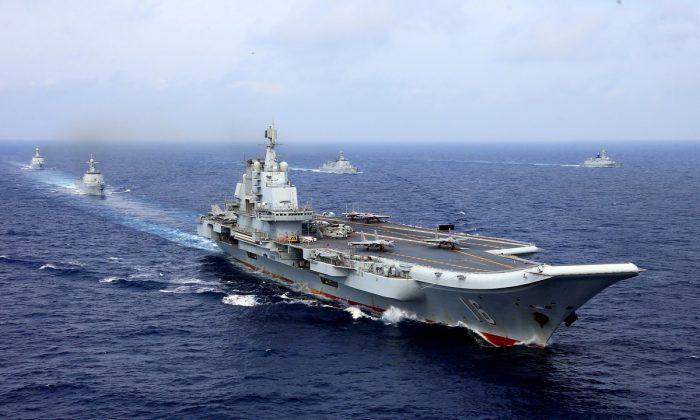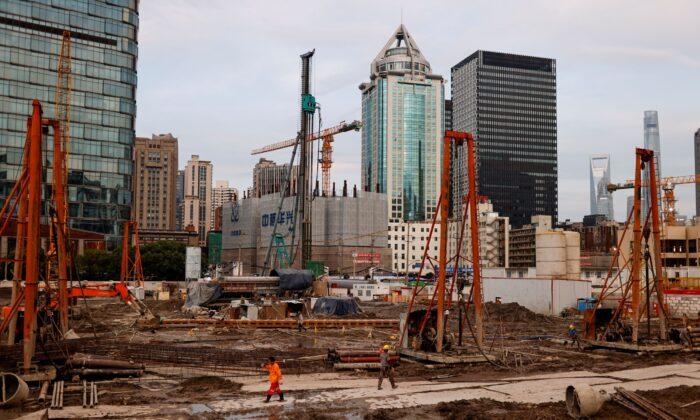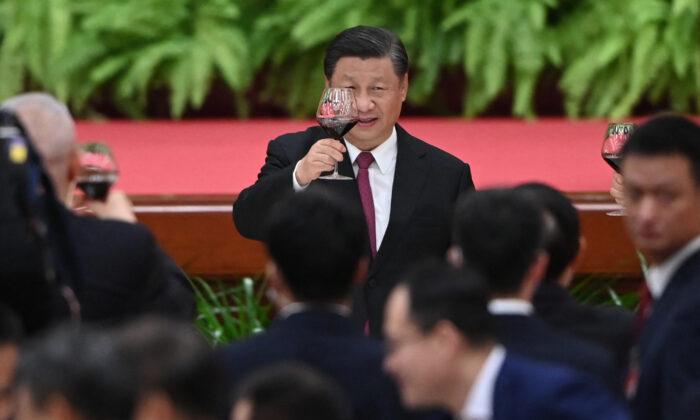Chinese state media has recently featured heavy promotion of China’s carrier program, playing up its expansion as a means of challenging the United States for control of the seas. This strategy is in keeping with the growing assertiveness of the Chinese armed forces, as well as the Chinese Communist Party’s aim to expand its geopolitical influence beyond China’s borders.
‘Tightening Belts’ and the Narrative of ‘Military Rise’
On June 6, the overseas-based, Beijing-backed Duowei News published an article via its affiliate Duowei Magazine titled “China’s Third Aircraft Carrier Unveiled; Beijing’s Military Rise Comes to the Fore.” The piece analyzed the Party narrative about the Chinese military rise, with three important points of discussion.Firstly, Duowei noted that past talk about China’s rise mainly focused on the economic arena, but Beijing has virtually stopped using the term “economic rise” during bilateral talks to resolve the U.S.–China trade war.
That recent rhetoric in the Party media promotes Chinese military strength and not economic strength is indicative of China’s worsening predicament. The failure of Sino–U.S. trade negotiations is widely anticipated to result in a substantial U.S. tariff hike, impacting China’s economy and living standards considerably. As Premier Li Keqiang warned earlier this year, China may have to start “tightening its belt.” In this context, the state media’s rhetoric reflects a real shift in affairs.
Second, the article discusses the CCP’s construction plan, which aims to field six to 10 carrier battle groups by “the middle of the 21st century.”
A single carrier battle group is a blue-water naval formation that includes, apart from the aircraft carrier itself, a number of supporting vessels such as large frigates, submarines, oil tankers, and other supply ships, as well as a variety of naval combat and support aircraft. At present, only the United States possesses the wherewithal to support multiple carrier groups, which indicates that the Communist Party intends to build up the Chinese military to match or surpass U.S. strength.
The article’s third topic turns to the realignment of countries in the South China Sea region to stand with China, not the United States. It claims that, “having undergone modern-day colonial wars and the two world wars, the South China Sea countries have completely turned their backs on China for security, instead relying on the United States.”
Modern Realities of Aircraft Carrier Strategy
Historically, the era of large-scale naval combat between multiple carrier fleets began and ended with the Pacific Theater of World War II. That war saw the complete destruction of the imperial Japanese fleet, leaving the United States uncontested in the aircraft carrier department. Today, the role of U.S. carriers has shifted. It is now mainly a tool for force projection, not just because there is no other world power with a significant carrier fleet, but also because modern weapons and electronic warfare systems vastly reduce the effectiveness of large-scale naval warfare.Carriers today are highly vulnerable to a variety of threats, such as long-range anti-ship missiles and submarines. The era of fighting fleet-to-fleet battles with carrier-based strike aircraft is long past. In modern naval combat, an aircraft carrier depends far more on the effectiveness of electronic countermeasures for its protection.
The United States alone has maintained large numbers of carrier groups due to its having assumed responsible for global security and order in the post-World War II era. As a result, the navies of the United Kingdom, France, Russia, and other countries avoid sinking the vast resources needed to maintain dedicated carrier fleets and are content with one or two carriers sufficient for symbolic value.
In sum, while the Chinese regime’s plan to build six to 10 carrier battle groups in the coming decades seems like a bold show of force, the thinking behind it suffers fundamental flaws. Prior to and during the Pacific War, the Imperial Japanese Navy fielded multiple carrier formations that, for a time, surpassed the capabilities of the U.S. Navy. Its defeat came from the crushing disparity in industrial power between the two countries.
Who Benefits From Chinese Saber Rattling?
China’s carrier fleet has a long way to go before it lives up to the CCP’s military goals. The two ships currently deployed with the People’s Liberation Army Navy are still in the phase of gaining basic operational experience, and lack the equipment to perform long-distance oceangoing missions.Hong Kong’s English-language outlet, Asia Times, reported in a June 5 article that the 001A, China’s first domestically built carrier, requires 13,000 tons of fuel to operate at full load. It consumes 1,100 tons daily when cruising at 20 knots, and 1,500 if in the so-called war state. This is due to the increased sailing speed the carrier needs to provide sufficient lift for its planes to take off.
Further, the 001A also has the duty of refueling the six to eight destroyers and frigates in the accompanying formation. Under these circumstances, the entire carrier group can only spend four full days in operations at sea before returning to Hong Kong for resupply. Its realistic area of activity is confined to the South China Sea, making it unable to carry out missions in the eastern Pacific or Indian oceans.
Thus, Beijing still has many limitations to overcome before its planned six to 10 carrier groups can become a viable challenge to U.S. command of the seas. This is a long-term vision in the works since the “panda-hugging” era during the Obama administration, and didn’t begin only as a reaction to the Sino–U.S. trade war. The CCP’s strategy of preparing for a decisive battle with the U.S. military doesn’t change with the shift in attitudes in Washington.
It’s hard to avoid parallels between the Chinese navy’s current buildup and the route taken by imperial Japan leading up to the attack on Pearl Harbor. The United States keenly remembers the early days of the Pacific War and its arduous struggle with the Imperial Japanese Navy (IJN). Such experiences have made the U.S. armed forces highly vigilant against developing threats.
Considering the unlikelihood of China being able to compete with the United States in either fielding carriers or developing the experience and technology needed to win a carrier war, what practical benefit could the CCP hope to derive from such a costly construction plan? Here we can take another page from the imperial Japanese experience: To compete for funding, prestige, and promotions, IJN admirals manufactured conflicts and set unrealistic strategic goals. They goaded Japan into war and led it to its ultimate defeat.
Today, those in charge of the Chinese armed forces dream about their rise as a military power regardless of its actual feasibility, and the Party, bent on international hegemony, is ready to oblige. But in the face of prolonged economic downturn, China doesn’t have the financial ability to fuel these military dreams. Ultimately, such narratives serve mainly as fodder for domestic nationalism, but to those who stoke Chinese nationalist sentiments, the feasibility and consequences of the country’s “military rise” are of little concern.





